In the real circuit, there are 2 implicit components and factors.
- Capacitance across the switch slows rise time, absorbs energy
- Slow Q1 switch off, slows rise time
The C is made up of internal (interwinding C) in the L, transistor C, diode C and stray C (but not C1).
C can limit max voltage (even when D1 is removed). Energy in L is \$L\cdot I^2\$, while energy in the implicit capacitance is \$C\cdot V^2\$. The peak possible voltage will be when all the inductor energy is transferred into C, raising its voltage until \$C\cdot V^2 = L\cdot I^2\$
The transistor switch off rate is controlled by base R and CB or Miller capacitance. As Q1 tries to turn off, the voltage shoots up, and this high slope forces current through the CB cap, keeping Q1 turned on. Thus \$\frac{dI}{dT}\$ is limited.
Either of these can be manipulated to get controlled max voltage without any explicit extra components.
e.g L=47μH, I=25mA, C=10pF, => V=54V
You will note that if you Ipk is constant, then V is constant, so if you have a currentmode control circuit (i.e. Q1 switches off when I hits the threshold), the V max will be constant regardless of battery V. ( or if you have a crappy oscillator where \$T_{on} \sim \frac{1}{V_{batt}}\$, then I will also be constant)
"An engineer is a man who can do for 10 bob what any fool could do for a pound"
You can measure the voltage with a scope, by looking at the voltage at the moment that the probe makes contact to C1. After a while (us) it drags the voltage down, but the initial contact will be at full voltage.
Alternatively if you have some sort of variable high voltage supply \$[V_{psu}]\$ (or even a fixed voltage that is close to the voltage to measure), you can connect you meter between \$V_{tube}\$ and \$V_{psu}\$, and adjust \$V_{psu}\$ until the difference is 0 and then measure \$V_{psu}\$. As long as \$V_{psu}\$ is close to \$V_{tube}\$, only a small current will flow.
Note that active control of flyback is most simply done by stopping the pulses when \$V_{max}\$ is exceeded, rather than PWM varying the duty cycle.
A couple of non-obvious ways to sense the voltage for control purposes:
- You could have a capacitive divider across Q1, e.g. 10pF:1nF
- you could put a secondary winding around L1. If L1 is 500 turns, a single turn sense winding will make ~ 1/2V
